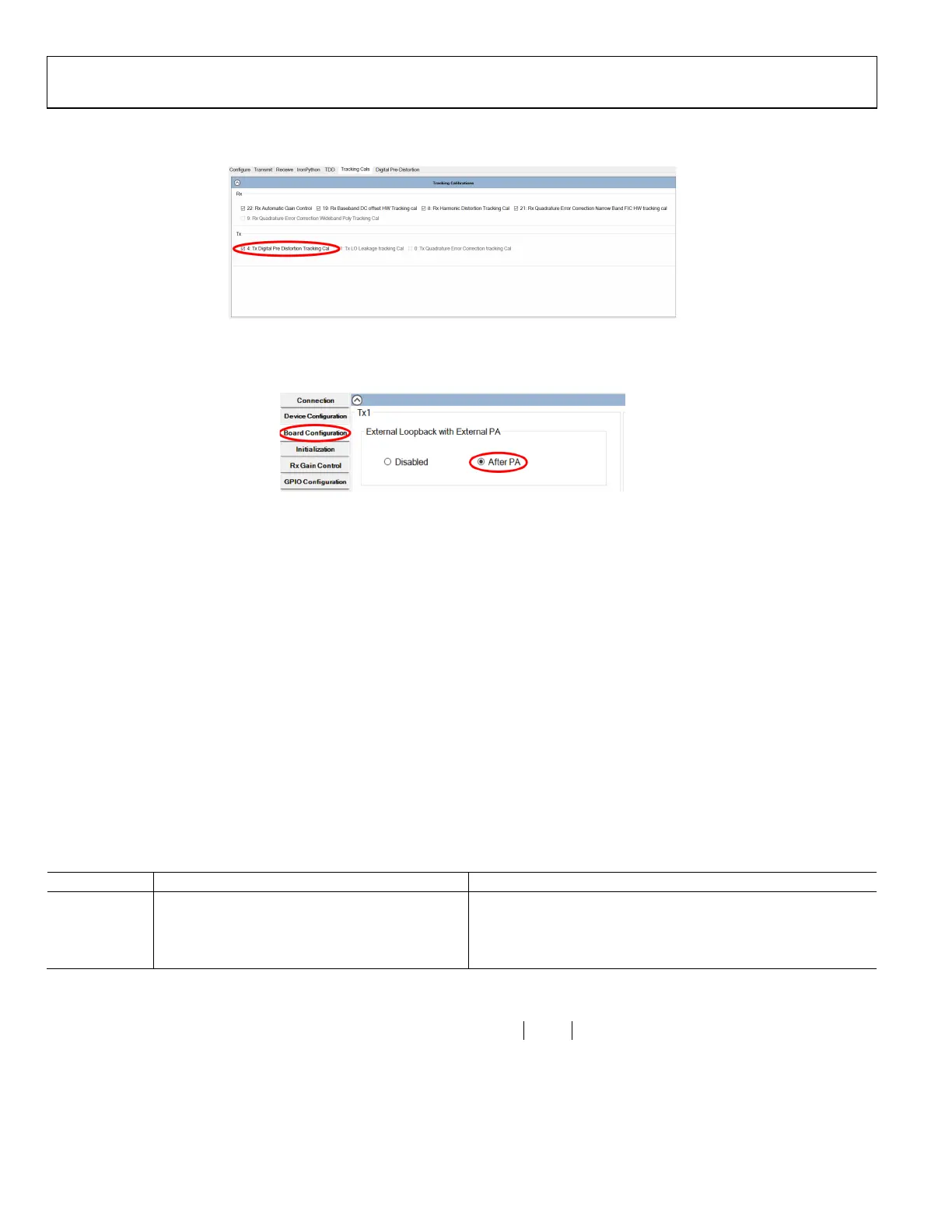UG-1828 Preliminary Technical Data
Rev. PrB | Page 182 of 277
Note that setting it to be “TRUE” is necessary but not sufficient to start DPD operation. The DPD starts when the corresponding
tracking calibration bit is also set, as shown in Figure 173.
Figure 174. TES Configuration for Enabling DPD Tracking Calibration
The profile must indicate that there exists an external loopback connection and an external power amplifier for this channel. This can be
done by setting “Board Configurations” in TES properly, as shown in Figure 174.
Figure 175. TES Configuration for External Loopback with External Power Amplifier
amplifierType
Currently, the power amplifier type should always be set to ADI_ADRV9001_DPD_AMPLIFIER_DEFAULT if DPD is enabled. The
default power amplifier type is referring to “non GaN” type, such as MOS type. In the future, other power amplifier type might be
supported.
lutSize
Currently, the supported LUT sizes are 256 and 512. This size determines the number of entries in the DPD LUT. A larger number of
entries provides better LUT granularity.
model
Currently, the model should be set to ADI_ADRV9001_DPD_MODEL_4 only. The other models exist for backwards compatibility with
other transceivers and should not be used at this time. Model 4 consists of four taps (T=4) which can be described by the following
equation:
3
0
( ) (| ( ) |) ( )
tt t
t
xn dn l dn k
ψ
=
= −−
∑
Delays for each tap are described in Table 78.
Table 78. Delays of DPD Model 4
Tap Delay of Data (k) Delay of Magnitude (l)
0 0 0
1 1 1
2 2 2
3 1 2
Based on Table 78, the equation could be rewritten as:
ψψ ψ ψ
= + − −+ − −+ − −
3
() (| ()|)() (| ( 1)|)( 1) (| ( 2)|)( 2) ( ( 2))( 1)
01 2
xn dn dn dn dn dn dn dn dn
where ψ
0
(|d(n)|), ψ
1
(|d(n-1)|), ψ
2
(|d(n-2)|) and ψ
3
(|d(n-2)|) represent four taps, generated by the LUT.

